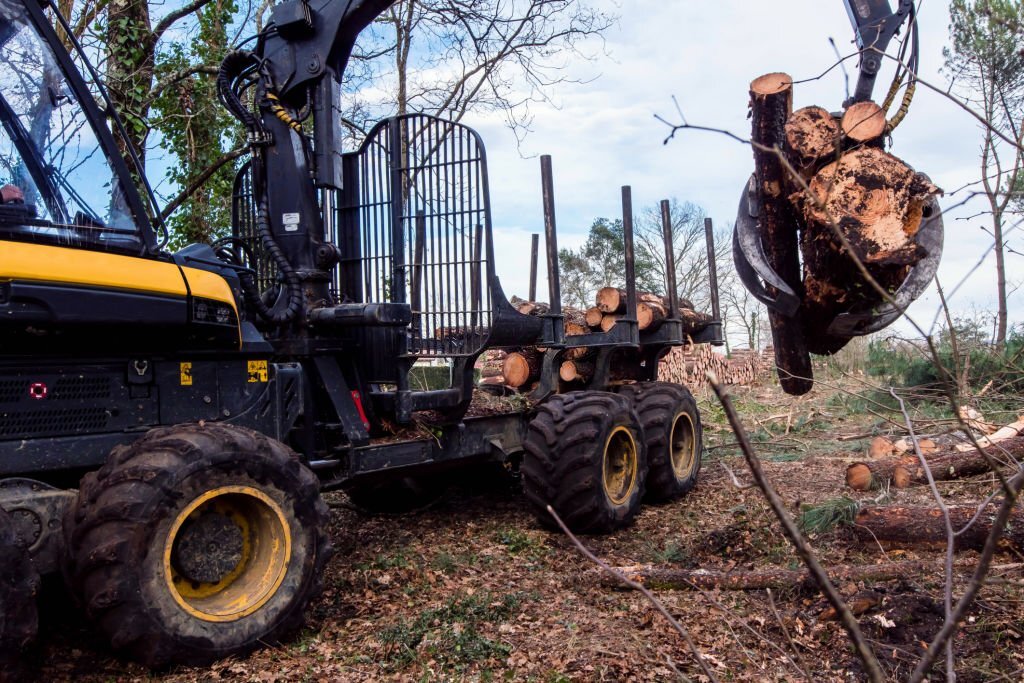
Introduction
Logging equipment is the backbone of the forestry industry, facilitating the extraction and transportation of timber with efficiency and precision. To ensure the continued optimal performance of logging machinery, regular maintenance, and servicing are essential. Proper upkeep not only extends the equipment’s lifespan but also ensures the safety of operators and the productivity of logging operations. In this article, we will explore the necessary maintenance and servicing requirements for logging equipment, including preventive measures, inspections, and best practices, to promote equipment longevity and safe operations in the logging industry.
Preventive Maintenance
1.1 Regular Inspection and Lubrication
Scheduled preventive maintenance involves regular inspections of logging equipment, and identifying and addressing potential issues before they escalate. This includes checking for wear and tear, leaks, and loose bolts, and ensuring that all components are adequately lubricated.
1.2 Benefits
- Equipment Longevity: Preventive maintenance helps extend the life of logging machinery, reducing the need for premature replacements.
- Enhanced Safety: Regular inspections mitigate the risk of sudden equipment failures, promoting a safer work environment for operators and workers.
Fluid Analysis and Replacement
2.1 Monitoring Fluid Levels and Quality
Fluid analysis is crucial in determining the condition of the engine, hydraulic system, and other components. Monitoring fluid levels and quality can help identify contaminants, leaks, or the need for fluid replacements.
2.2 Benefits
- Optimal Performance: Properly maintained fluids ensure the efficient functioning of engines and hydraulic systems, enhancing overall equipment performance.
- Early Issue Detection: Fluid analysis can detect potential problems early, preventing major breakdowns and costly repairs.
Tire Maintenance
3.1 Regular Tire Inspections
Logging equipment tires are subject to significant stress in rugged terrains. Regular tire inspections involve checking for cuts, punctures and wear to ensure safe and reliable performance.
3.2 Benefits
- Improved Traction: Well-maintained tires provide better traction, especially in challenging terrains, reducing the risk of accidents.
- Cost Savings: Timely tire maintenance reduces the need for premature tire replacements, saving on operational costs.
Electrical System Checks
4.1 Battery Inspection and Charging
The electrical system is essential for the proper functioning of logging equipment. Regular battery inspection, charging, and cleaning help prevent starting issues and electrical malfunctions.
4.2 Benefits
- Reliable Equipment Start-Up: A well-maintained electrical system ensures smooth equipment start-up, reducing downtime and delays in operations.
- Operator Safety: Properly functioning electrical systems contribute to a safer work environment for operators and workers.
Hydraulics Maintenance
5.1 Hydraulic System Inspections
The hydraulic system is critical for various functions in logging equipment, including boom operation, grapples, and loading mechanisms. Regular inspections and maintenance of hydraulic components ensure efficient operations.
5.2 Benefits
- Optimum Performance: Well-maintained hydraulics enable smooth and precise control of logging machinery, improving productivity and reducing fuel consumption.
- Safety Assurance: Properly functioning hydraulics minimize the risk of accidents related to equipment operation.
Engine Care and Maintenance
6.1 Regular Oil Changes and Filter Replacement
The engine is the heart of logging equipment, and regular oil changes and filter replacements are essential for its longevity and efficiency. Clean oil and filters protect against engine wear and help maintain optimal performance.
6.2 Benefits
- Prolonged Engine Life: Proper engine maintenance prevents premature wear and tear, extending the life of logging machinery.
- Fuel Efficiency: A well-maintained engine operates more efficiently, reducing fuel consumption and operational costs.
Operator Training and Maintenance Record Keeping
7.1 Operator Training Programs
Well-trained operators play a crucial role in maintaining logging equipment. Operator training programs familiarize operators with the equipment’s proper use, maintenance, and safety protocols.
7.2 Maintenance Record Keeping
Maintaining comprehensive records of equipment maintenance, servicing, and repairs is vital for tracking the machinery’s health and compliance with manufacturer guidelines.
Conclusion
Proper maintenance and servicing are fundamental to the efficient and safe operation of logging equipment. Preventive maintenance practices, regular inspections, and adherence to manufacturer guidelines ensure the longevity of logging machinery and minimize the risk of breakdowns. From fluid analysis and tire maintenance to electrical system checks and engine care, each aspect of equipment maintenance plays a significant role in promoting equipment efficiency and safety. By prioritizing responsible upkeep and implementing comprehensive maintenance programs, the logging industry can ensure sustainable and productive operations while safeguarding the well-being of operators and the environment.

